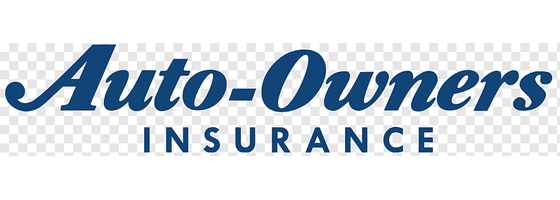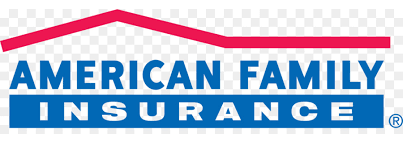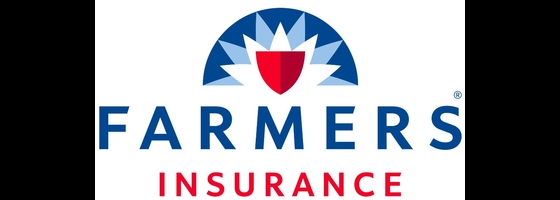- Generous list of available discounts
- Highly-rated with J.D. Power
How Much Does Homeowners Insurance Cost in 2025?

Our evaluations and opinions are not influenced by our advertising relationships, but we may earn a commission from our partners’ links. This content is created by TIME Stamped, under TIME’s direction and produced in accordance with TIME’s editorial guidelines and overseen by TIME’s editorial staff. Learn more about it.
According to a recent study by Insurance.com, the national average annual cost for home insurance is $2,601, assuming $300,000 of dwelling coverage. This cost varies by state. The cheapest, Hawaii, has an average annual rate of $613. The most expensive, Oklahoma, has an average annual rate of $5,858. Leading homeowners insurance companies’ rates rose an average of 11.3% in 2023.
A note on average costs: Throughout this article, we reference insurance average costs from multiple sources for U.S. states, coverage levels, and individual companies. Please remember that your insurance cost may vary considerably from what is shown here.
This is the average cost of homeowners insurance in each U.S. state as of June 2024, assuming $200,000, $300,000, and $400,000 of dwelling coverage, according to Insurance.com.
| State | $200,000 | $300,000 | $400,000 |
|---|---|---|---|
Alabama | $2,391 | $3,147 | $3,798 |
Alaska | $1,355 | $1,708 | $2,064 |
Arizona | $1,906 | $2,490 | $3,063 |
Arkansas | $3,328 | $3,958 | $4,675 |
California | $1,043 | $1,405 | $1,772 |
Colorado | $3,169 | $4,099 | $4,662 |
Connecticut | $1,750 | $2,231 | $2,707 |
Delaware | $1,078 | $1,384 | $1,729 |
Florida(1) | $3,773 | $4,419 | $4,984 |
Georgia | $1,760 | $2,302 | $2,881 |
Hawaii | $461 | $613 | $791 |
Idaho | $1,476 | $1,961 | $2,449 |
Illinois | $2,423 | $3,062 | $3,587 |
Indiana | $2,313 | $2,991 | $3,620 |
Iowa | $2,022 | $2,654 | $3,230 |
Kansas | $3,638 | $4,843 | $5,688 |
Kentucky | $2,486 | $3,326 | $4,153 |
Louisiana | $2,822 | $3,594 | $4,409 |
Maine | $1,021 | $1,391 | $1,741 |
Maryland | $1,318 | $1,715 | $2,131 |
Massachusetts | $1,303 | $1,640 | $1,998 |
Michigan | $1,825 | $2,411 | $2,956 |
Minnesota | $1,828 | $2,420 | $2,999 |
Mississippi | $2,646 | $3,380 | $3,941 |
Missouri | $2,638 | $3,543 | $4,114 |
Montana | $2,543 | $3,289 | $3,831 |
Nebraska | $3,809 | $4,800 | $5,904 |
Nevada | $1,093 | $1,467 | $1,853 |
New Hampshire | $948 | $1,221 | $1,488 |
New Jersey | $1,171 | $1,526 | $1,894 |
New Mexico | $1,829 | $2,647 | $3,489 |
New York | $1,340 | $1,816 | $2,349 |
North Carolina | $2,141 | $2,941 | $3,398 |
North Dakota | $2,431 | $3,147 | $3,898 |
Ohio | $1,805 | $2,160 | $2,613 |
Oklahoma | $4,442 | $5,858 | $7,012 |
Oregon | $1,347 | $1,755 | $2,185 |
Pennsylvania | $1,475 | $1,911 | $2,130 |
Rhode Island | $1,505 | $1,950 | $2,381 |
South Carolina | $2,061 | $2,678 | $3,219 |
South Dakota | $2,607 | $3,390 | $3,970 |
Tennessee | $2,369 | $3,060 | $3,737 |
Texas | $2,951 | $3,851 | $4,643 |
Utah | $1,416 | $1,802 | $2,161 |
Vermont | $974 | $1,263 | $1,555 |
Virginia | $1,645 | $2,151 | $2,694 |
Washington | $1,260 | $1,612 | $2,017 |
Dist. of Columbia | $984 | $1,342 | $1,703 |
West Virginia | $1,465 | $1,911 | $2,354 |
Wisconsin | $1,274 | $1,662 | $2,038 |
Wyoming | $1,351 | $1,897 | $2,490 |
(1) Excludes hurricane deductible
These are the cheapest states for homeowners insurance (based on $300,000 of dwelling coverage).
| Average annual cost | Average monthly cost | |
|---|---|---|
Hawaii | $613 | $51 |
New Hampshire | $1,221 | $102 |
Vermont | $1,263 | $105 |
Washington, D.C. | $1,342 | $112 |
Delaware | $1,384 | $115 |
These are the most expensive states for homeowners insurance (based on $300,000 of dwelling coverage).
| Average annual cost | Average monthly cost | |
|---|---|---|
Oklahoma | $5,858 | $488 |
Kansas | $4,843 | $404 |
Nebraska | $4,800 | $400 |
Florida | $4,419 | $368 |
Colorado | $4,099 | $342 |
Insurers look at multiple factors when calculating your homeowners insurance rate. These vary by company but typically include the following:
Remember that rates typically vary by insurer, so always shop around with at least three or four insurers when buying a homeowners policy.
As mentioned earlier, coverage selection typically affects the cost of a homeowners insurance policy. Here are average annual premiums, according to Insurance.com, for policies with various levels of dwelling (with a $1,000 deductible) and personal liability coverage.
| Dwelling coverage | Personal liability coverage | Average annual premium |
|---|---|---|
$200,000 | $100,000 | $1,988 |
$200,000 | $300,000 | $2,005 |
$300,000 | $100,000 | $2,582 |
$300,000 | $300,000 | $2,601 |
$400,000 | $100,000 | $3,211 |
$400,000 | $300,000 | $3,231 |
$600,000 | $100,000 | $4,651 |
$600,000 | $300,000 | $3,677 |
$1,000,000 | $100,000 | $7,380 |
$1,000,000 | $300,000 | $7,412 |
Dwelling coverage provides financial protection if your home is damaged or destroyed by fire, wind, vandalism, or other peril. Personal liability coverage provides financial protection if you’re held liable for someone’s injury or property damage and sued.
Your choice of deductible can also affect what you pay for homeowners insurance. Here are average premiums for several leading homeowners insurers, for deductibles of $500, $1,000, and $2,000.
| Company | $500 | $1,000 | $2,000 |
|---|---|---|---|
Allstate | $1,763 | $1,594 | $1,391 |
American Family | $2,474 | $2,261 | $2,084 |
Amica | $1,181 | $1,089 | $991 |
Farmers | $1,523 | $1,455 | $1,349 |
Nationwide | $1,365 | $1,236 | $974 |
Progressive | $1,462 | $1,355 | $1,259 |
State Farm | $1,470 | $1,356 | $1,234 |
Travelers | $1,561 | $1,444 | $1,257 |
USAA | $1,364 | $1,231 | $1,049 |
Source: The Zebra
Each homeowners insurance company uses unique methods to calculate the cost of a homeowners insurance policy. So, costs can vary from company to company—sometimes dramatically. Here’s the average cost of a homeowners insurance policy with $200,000 of dwelling coverage from nine leading providers.
| Company | Average annual cost |
|---|---|
Auto-Owners | $1,302 |
Nationwide | $1,350 |
Erie | $1,390 |
Chubb | $1,503 |
State Farm | $1,531 |
USAA | $1,535 |
Farmers | $1,455 |
Allstate | $1,594 |
Travelers | $2,974 |
Source: The Zebra
| Company | Annual cost | Monthly cost | A.M. Best | J.D. Power |
|---|---|---|---|---|
Auto-Owners | $1,302 | $108 | A++ | 834 (3rd) |
Nationwide | $1,350 | $112 | A+ | 812 (9th) |
Erie | $1,390 | $116 | A+ | 856 (1st) |
Michigan-based Auto-Owners Insurance Company does business in 26 states. The company offers several types of insurance in addition to car insurance. This includes home insurance policies, which cover dwelling and personal property, personal liability protection, and additional living expenses. You can also purchase specialty coverages for high-value homes and to protect against equipment breakdown and cyber-attacks.
Auto-Owners received the 3rd-highest J.D. Power Customer Satisfaction Index rating among homeowner insurers in 2023, with a score of 834 out of 1,000.
Nationwide offers a wide range of discounts and ways to save, including discounts for having multiple policies (bundle home and auto), a newly purchased home, prior insurance, protective devices, being claim-free, living in a gated community, renovating your home, and savings based on the age of your roof. Its optional coverages include identity theft, high-value items, replacement cost dwelling, water backup, earthquake, and flood insurance.
Nationwide ranked 8th with 812 out of 1,000 points—just below the national average—in the J.D. Power 2023 homeowners insurance study.
Erie Insurance Group is based in Erie, Pennsylvania, but operates in 12 states. For 2023, it received J.D. Power’s highest overall customer satisfaction rating among home insurance companies, scoring 856 out of 1,000 points. Their customer service includes access to live support 24/7.
Erie offers multi-policy discounts from 16% to 25%, depending on the state. The company also guarantees the replacement cost and covers theft, animals, birds, fish, cash, and precious metals in its base policy. Unfortunately, it’s only available in 12 states.
| Annual cost | Monthly cost | A.M. Best | J.D. Power | |
|---|---|---|---|---|
American Family | $2,261 | $188 | A | 813 (8th) |
Allstate | $1,594 | $133 | A+ | 809 (12th) |
Farmers | $1,455 | $121 | A | 800 (17th) |
Source: The Zebra
American Family was the most expensive home insurer in our review at the time of writing. The company offers optional coverages such as equipment breakdown, credit theft protection and monitoring, and matching undamaged siding. It also offers a diminishing deductibles feature, which reduces your deductible by $100 at each renewal.
Discounts include those for bundling home and auto insurance, having safety features, having a newer or recently renovated home, choosing auto-pay or paying in full, being a loyal customer, and a generational discount that helps you save if a parent was an American Family customer.
American Family ranked 8th, with 813 out of 1,000 points, in the J.D. Power 2023 study of homeowners insurers.
Allstate is one of the country’s most easily recognized insurance brands. The company’s homeowners policy includes coverage options such as identity theft restoration, water backup, scheduled property, business property, sports equipment, green home improvement reimbursement, yard and garden, electronic data recovery, and musical instrument coverage.
Discounts include having multiple policies (bundling home and auto), responsible payment, being claim-free, being a loyal customer, living in a new home, opting for an easy-pay plan, and having theft or fire-prevention devices in the home.
The company touts itself as the first to offer additional protection for those renting out their home. Its HostAdvantage home-sharing insurance package provides financial protection against theft and damage and discounts on home cleaning services.
Allstate ranked 12th, with 809 out of 1,000 points, in the J.D. Power 2023 study of homeowners insurers.
Los Angeles-based Farmers is among the country’s largest insurance companies. Optional homeowners coverages include extended replacement cost for dwelling, guaranteed replacement cost for dwelling, building ordinance or law, sewer, and drain water damage, scheduled personal articles, identity shield, and earthquake coverage.
The company appears to offer fewer discounts than other insurers, including those for safety and security systems, nonsmokers, and having multiple policies (bundling). It also offers discounts for first responders, military, healthcare professionals, and other affiliations.
Farmers earned 800 out of 1,000 points and ranked 17th in the J.D. Power 2023 study of the homeowners insurance market.
We reviewed policy information for the cheapest and most expensive insurers from a recent review by The Zebra. All policy information came from company websites. A.M. Best information came from either company websites or directly from A.M. Best. We also examined company ratings in the J.D. Power 2023 U.S. Home Insurance Study.
We developed our “Great for” recommendations based on information provided by these companies on their websites.
The only way to know how much you’ll pay for homeowners insurance is to obtain quotes from companies. But to do that, you’ll need a clear idea of how much money you’d need to rebuild your home and replace your belongings. You’ll also want to understand your financial risk if you’re sued.
Imagine your home burned to the ground (admittedly, not a nice thing to think about), and you had to rebuild. The cost to rebuild from the ground up with all new materials is your replacement cost estimate. This—not your home’s market value—is the dollar value you should use when deciding on your dwelling and other structures' coverage limits.
A quick way to do this is to find the local per-square-foot cost of building a home and multiply that by the square footage of your home.
For a more accurate estimate, hire a professional appraiser. This individual will visit your home and use their knowledge of the local building and construction market and building codes to develop your estimate.
Note that when you apply for a policy, the insurer will typically have its appraiser review your property and calculate its replacement value. It’s still a good idea to get an independent estimate of your home’s value.
Insurance companies typically expect you to have dwelling coverage based on at least 80% of your home’s replacement cost. Any less, and the insurer may require you to pay additional out-of-pocket costs if you have a claim.
Create a home inventory to estimate the cost of replacing personal belongings, such as furniture, appliances, electronics, clothing, etc. Use the total value of your belongings to calculate your personal property coverage limit.
Personal liability coverage provides financial protection if you’re held responsible and sued over someone’s injury or property damage. To estimate your coverage need, total your net worth and add the value of your assets. Homeowners insurance policies typically offer up to $500,000 of coverage. So, if your estimate is above that amount, you may want to consider an umbrella policy.
The inflationary period following the pandemic saw surges in pricing for many of the goods and services we rely on. Homeowners insurance is no exception.
A January 2024 story in the Wall Street Journal detailed how insurance companies are responding to market challenges, ranging from natural disasters to inflation, with sometimes drastic rate increases. In some cases, insurers are pulling out of especially challenging regions, leaving homeowners with fewer choices. For example, the state-government-sponsored “insurer of last resort,” Citizens Property Insurance, is now the largest homeowners insurer in Florida.
But living outside of places like coastal Florida doesn’t necessarily make a homeowner immune to this trend. Insurance is about spreading financial risk. As insurers seek to remain profitable, it’s possible that people in relatively risk-free areas of the country will see dramatic rate increases.
The bottom line is that the insurance industry is facing severe challenges. And wherever you live, you can expect to pay more than ever for homeowners insurance.
Homeowners insurance is not cheap at a national average cost of $2,601. While saving money on insurance is becoming increasingly challenging in some areas of the country, there are strategies most homeowners can employ to save money.
As we’ve seen in our review, the difference in cost between the most and least expensive insurers is more than $1,000 per year. Shopping around may be the most important thing you can do to save money on insurance.
All the insurers we reviewed offer “multi-policy” discounts for bundling home and auto coverage. According to a recent review of multiple insurers by USA Today, these discounts range from 6% to 23%, depending on the insurer.
All of the insurers in our review offer additional discounts besides multi-policy. These vary by company and may include discounts for home safety and security features, having a newer home, paying the policy premium in full, maintaining a claim-free record, and more.
Choosing a higher deductible means you pay more out of pocket to repair or rebuild your home if it’s damaged due to a covered peril. But it’ll bring down the cost of your coverage.
It’s common practice for insurance companies to review a customer’s credit history when calculating their homeowners insurance rate. Having a good history can help you save money on insurance.
Independent insurance agents represent multiple insurance companies. So—not only are they insurance experts who can understand your coverage needs—they know the ins and outs of the companies they sell and can help you find more ways to save.
Homeowners insurance has gotten more expensive in recent months, and costs will continue to rise as insurers address challenges facing their industry. The good news for most homeowners is that they still have many choices for insurance companies, and there are several ways to save money on their policy.
The best home insurance for you is a policy that addresses your coverage needs at a cost that works for your budget. It’s recommended that you shop around with several homeowners insurers to ensure you get the best coverage.
A home warranty is different from homeowners insurance. The latter provides financial protection if the home is damaged by fire, wind, hail, or other catastrophe. The former essentially provides discounted repair services for systems such as HVAC, plumbing, and electrical. While a home warranty may seem like an attractive proposition, it does have some drawbacks. Many homeowners may be better served with an “emergency fund” for such repairs.
The cost of insurance should not affect your mortgage principal or interest. However, if—like many homeowners—you use an escrow account to pay your principal, interest, property tax, and home insurance, any change in your homeowners insurance cost will affect what you pay each month to your lender.
Note: Mortgage lenders typically require homebuyers to have homeowners insurance.
Unfortunately, some homeowners face the reality of their homeowners insurance policies not renewing. This is particularly true in areas where insurance companies are cutting back their business to limit their overall risk.
If your insurer informs you that your policy will not be renewed, check with other insurers to see if coverage is available. An independent insurance agent, who represents multiple insurers and understands the local insurance market, can help.
If you’re still struggling to get coverage, determine if your state offers an assigned-risk program for homeowners—or other insurance options. Again, in this scenario, an insurance agent can help.
Home insurance companies typically offer a range of deductibles. For example, when you choose a policy, you can choose from options of $500, $1,000, and $2000. Remember that choosing a lower deductible means your policy will cost more, but you’ll pay less out of pocket if you have a claim.
The 80% rule states that a homeowners insurance company requires you to have dwelling coverage limits equal to at least 80% of your home’s replacement cost. If you fall beneath 80%, the insurer may not cover all your expenses if you have a claim.
The cost of a home renovation varies based on the extent of the work you plan to do (or have done). A light renovation averages $10–$60 per square foot, while an extensive renovation can run from $120–$275 per square foot. Many homeowners use home improvement loans to help with these costs.
The information presented here is created by TIME Stamped and overseen by TIME editorial staff. To learn more, see our About Us page.








